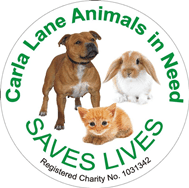How to Adopt?
We hope this guide will explain the procedures for adopting from us.
First of all, make sure you have thought it through carefully, and are certain of what you want. Owning a pet is a great responsibility, and does incur costs, as well as an investment of your emotions and time for the next 10+ years. Are you confident you will be able to provide a stable and loving home? Even if there is a house move, a change in employment, a relationship breakdown, illness, or a new child in the family?
Decide what kind of pet you would like to adopt. Think hard about what challenges you’d feel able to manage, and what you couldn’t. For example, would you draw the line at a lack of house training, a pet who is nippy, or an animal with health issues? It’s best to be realistic about these things from the start.
Do you want a dog, cat, or rabbit? These animals have very different needs, so before applying, we ask you to narrow down which species you most want to offer a home to. Our various members of staff specialise in caring for different types of animals, and can’t discuss the ones they don’t work with (for example, the kennel staff won’t be able to advise you on what cats we have available).
Once you have a good idea of what would suit you, take a look at our pages for pets needing homes. If you don’t see anyone suitable, then don’t worry. New animals arrive with us all the time, and some might not have had their profiles added yet.
Either way, the next step is to complete our Adoption Questionnaire. If we have an animal that you like, who seems to be a good match, we will then invite you to come and meet them at the rescue. If we like your form, but don’t have anyone suitable at the moment, we can keep hold of it, and let you know when the right animal comes to us.
Please note that sometimes, especially for puppies and small popular breeds, over 100 people can apply for the same pet, which means it’s impossible for staff to reply to each individual form. We also need time to look through the forms, in between caring for the animals. If you haven’t received a reply within a week, then your application has probably not been successful on this occasion, but that doesn’t mean you can’t apply for other animals in future.
If you live in rented accommodation, we must have confirmation that your landlord allows pets in the property, before we can offer you an appointment. This is to avoid any future problems, because a large number of animals come to us due to unwelcoming landlords in their previous homes.
WHAT HAPPENS NEXT:
Once you have been matched with an animal, the process becomes different depending on whether you are coming to see a dog, cat, or rabbit.
For dogs, we must view photographs or a video of your back garden/yard, to show it is entirely fenced in and secure, with no ways the dog could escape. For rabbits and guinea pigs, we must see photos of a suitable exercise space, and a hutch setup which meets our welfare standards.
When you meet your chosen pet, please be aware that you may not see their full personality straight away. They may have been with us for some time, or be experiencing stress due to the kennel/cattery environment. We do try to give you as accurate a picture as possible of what they are like, based on our assessments, staff observations, and any information received from previous owners, but with animals there is always room for an element of unpredictability. You will be cautioned ahead of time, about any potential behaviour issues staff have identified. Some nervous dogs may need multiple meetings, to build up their familiarity before they are ready to come home with you.
We do not allow visitors to walk around the kennel block, as this can be upsetting for the dogs. However, we do have rooms where you can meet them, as well as a paddock where you can take them for a walk. If you already have a dog, then we will carry out supervised introductions for them on site, to make sure everyone gets along. If everything works out well and you decide you want to offer them a forever home, we will arrange a day and time to bring your dog to you. This is usually within three days, but can depend on where you are and how busy we are.
With cats, we will invite you into the cattery and spend time with your chosen animal. The process is simpler than for dogs, but we still wish to ensure a proper match is made. Though we don’t deliver cats out, a home check is carried out either through video call, or if that’s not practical for you then we have a small number of trusted volunteers who can visit for an in-person check. Please do not let this worry you, we just want to check that the living space is suitable for your chosen pet. After this, we can make a second appointment for you to return to the rescue, and collect your new cat.
We will then request an adoption fee, which is discussed on our Costs of Rehoming page. A £50 deposit needs to be paid during the initial visit, and then the remainder when the animal comes home to you.
REHOMING POLICIES:
Most of our dogs cannot be rehomed with children under 12. The age limit for cats is usually lower, depending on the individual, but as a rule we cannot place animals in households with children under 5. Many animals come to us as strays with unknown history, or they might have been surrendered due to issues with children in their previous home. Young children may not understand how to read an animal’s body language, or how to respect the necessary boundaries, and we have to be very cautious in this regard, for the sake of all involved.
We assess each of our dogs, and give them a colour code based upon their behaviours. Our colour codes are green, amber, and red. Green dogs have shown no abnormalities, they are friendly and well-mannered in almost any situation. Amber dogs have slight issues, and might need more careful handling, stricter boundaries, or an owner with past experience of their particular breed. Red dogs are not currently up for adoption. They will have intense training and socialisation plans, until they can be reassessed and downgraded.
Each dog that leaves the sanctuary has individual recommendations based upon the assessment, the new owner’s family unit and circumstances. We also provide ongoing support, for any difficulties that might arise in the future.
We do not rehome rabbits or guinea pigs as single animals (except in unusual circumstances, for example if a rabbit was too aggressive to safely live with a partner). They must either go out as a pair, or one may be adopted as a companion for an existing animal in the house. We do on-site bonding sessions for rabbits, to facilitate this. Rabbits and guinea pigs must have suitable accommodation with space to exercise and perform natural behaviours, not be confined to a small hutch or cage.
A large number of the rabbits we’re asked to take in were presents for children who grew bored of them. Every home must have a responsible and dedicated adult as the primary caregiver. We don’t permit any of our animals to be bought as ‘surprise gifts’.



